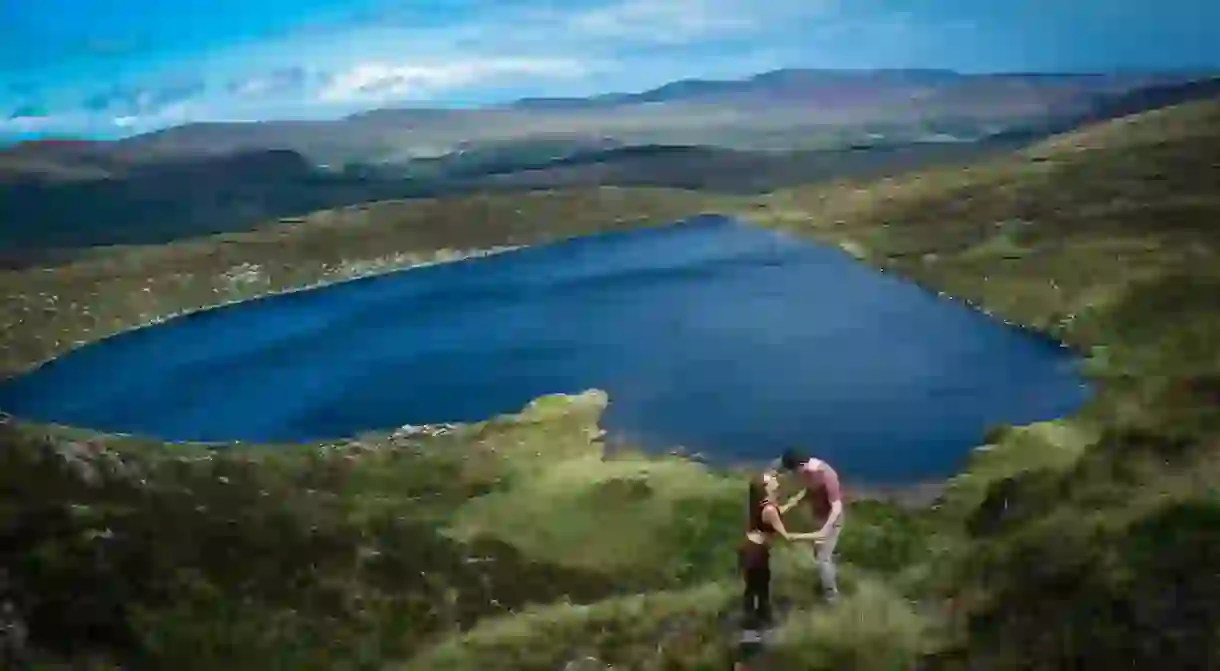Epic Places In Ireland Even The Irish May Not Know

Ireland has plenty of world-famous tourist sites, but there are also a plethora of hidden gems scattered through its lush green countryside. If you’re looking for cool Irish places to see that everyone and their grandmother doesn’t already know about, look no further.
Did you know – Culture Trip now does bookable, small-group trips? Pick from authentic, immersive Epic Trips, compact and action-packed Mini Trips and sparkling, expansive Sailing Trips.
Iveagh Gardens, Dublin City

Dublin’s Iveagh Gardens public park is tucked away behind the buildings of the surrounding streets, meaning that although it’s located only a short walk from the significantly better-known St. Stephen’s Green, it’s usually much quieter and more peaceful. There are lots of noteworthy things to see here too – Ireland’s only purpose-built archery field, the burial site of an elephant who died at the Dublin Zoo in 1922, and a waterfall that cascades over rocks from each of the country’s 32 counties.
Inishtooskert, County Kerry
The most northerly of County Kerry’s Blasket Islands, Inishtooskert is also known as An Fear Marbh (the dead man) or ‘The Sleeping Giant’ because of its shape – when viewed from the mainland, it looks like a man lying down on his back in the water. The island even inspired a 1998 children’s book about what might happen if the giant woke up.
Slieve League Cliffs, County Donegal

Many Irish people don’t realise that their country is home to some of Europe’s highest sea cliffs – and they aren’t the Cliffs of Moher. At 601 metres, the cliffs at Slieve League in Donegal are almost three times higher than their more famous County Clare counterpart.
Glendalough Mines, County Wicklow
While the monastic city of Glendalough is certainly no secret, those who visit it don’t generally walk as far as the ruins of the abandoned miners’ village at the west end of the Upper Lake, where lead was mined during the 19th and early 20th centuries. The remains of the mines, now part of Wicklow Mountains National Park, can only be accessed on foot.
Glenveagh National Park, County Donegal

The area around Glenveagh Castle is Ireland’s second largest National Park – after the Wicklow Mountains – and includes most of the Derryveagh Mountains, the ice-carved hollow known as the Poisoned Glen – a mistranslation of its Irish name, the Heavenly Glen – and part of Mount Errigal, Donegal’s tallest peak. It’s also home to the largest herd of red deer in Ireland.
Killary Harbour, County Galway/Mayo

Killary Harbour is described as ‘Ireland’s only true fjord’, extending in from the Atlantic Ocean for 16 kilometres, separating the counties of Galway and Mayo.
The Copper Coast Geopark, County Waterford
The Copper Coast is a 17-kilometre stretch of scenic coastline in County Waterford – from Kilfarrasy in the east to Stradbally in the west – that was declared a UNESCO Global Geopark in 2004.
Garnish Island, County Cork
The fabulous Italian gardens on Garnish Island in Bantry Bay were designed by the British landscape architect and garden designer Harold Ainsworth Peto for its owners in 1910. Their son later left the island to the nation, and it has acted as a writer’s retreat for authors, including George Bernard Shaw.
Farmleigh Estate, County Dublin
Formerly a home belonging to the Guinness family, Farmleigh House in Dublin’s Phoenix Park is now the official Irish State guest house, having welcomed visitors like the King of Malaysia and Queen Elizabeth II of England. Today, the estate and gardens are largely open to the public, hosting seasonal events such as craft and food markets, as well as the annual Africa Day celebrations in Dublin.
Lough Ouler, County Wicklow
Tonelagee, the third highest of the Wicklow Mountains, is home to an unusual, unmistakably heart-shaped lake called Lough Ouler.
Carrick-a-Rede Rope Bridge, County Antrim
Looking like something out of Pirates of the Caribbean, the vertigo-inducing rope bridge at Carrick-a-Rede near the Giant’s Causeway was first erected by salmon fishermen in 1755. It connects the island of Carrickarede to the mainland.













